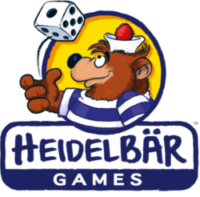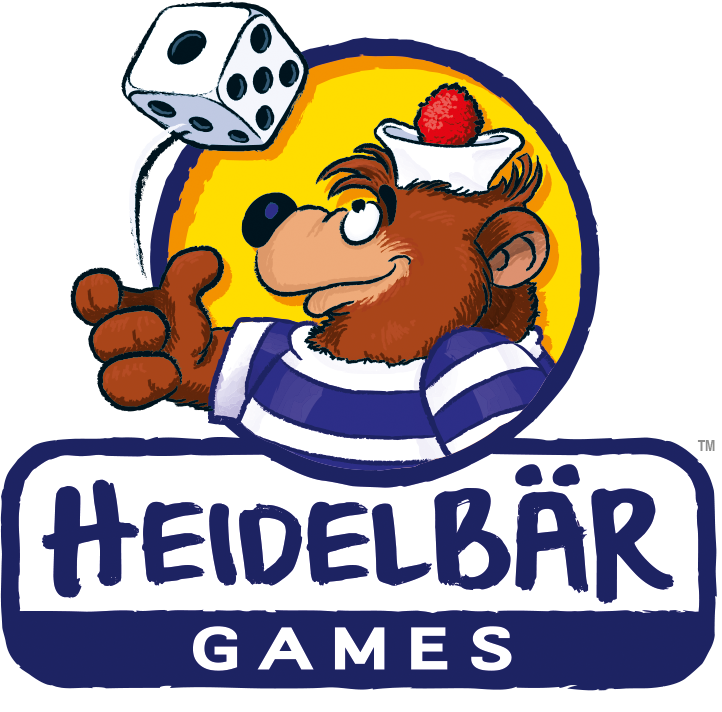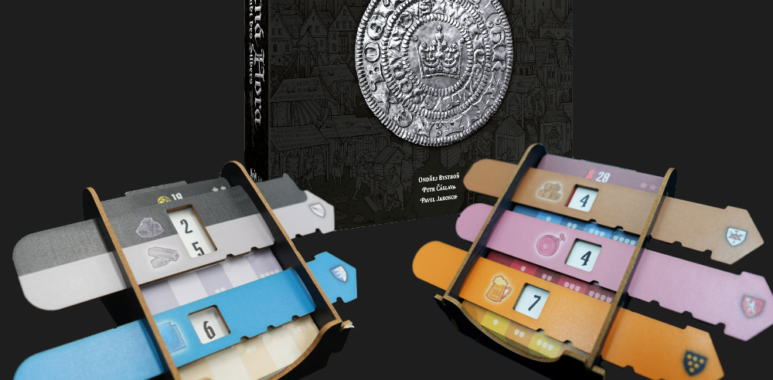
Kutná Hora – Diary 1: A Dynamic Economy System
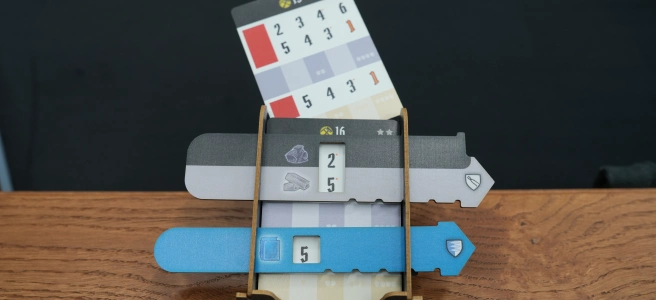 A lot of classic euros tend to skew towards players plotting out and executing their own plans each turn, without much interaction or connection between what they’re doing and what their opponents are doing. That’s not necessarily a bad thing of course, but the designers behind Kutná Hora: The City of Silver wanted to create a very different heavy euro experience.
A lot of classic euros tend to skew towards players plotting out and executing their own plans each turn, without much interaction or connection between what they’re doing and what their opponents are doing. That’s not necessarily a bad thing of course, but the designers behind Kutná Hora: The City of Silver wanted to create a very different heavy euro experience.
In Kutná Hora, everything is tied together by a dynamic supply and demand economic system that makes for an ever-shifting journey as the city evolves over the course of the game. Every action a player takes affects almost everyone else on the board in some way, and that keeps cycling in different directions from turn to turn. This makes for highly interactive rounds where you have to keep a close eye on what other players are doing and be willing to pivot, if you want to keep up.
Economic balance is the key to prosperity
“The dynamic economy is something really unique,” says Petr Čáslava, one of the game’s trio of co-designers. “Kutná Hora was designed on really dynamic elements — it’s not just the economics itself, it flows through other areas of the game, too. What we tried to do, and I truly believe we achieved, is to produce new stories around the table each time you play the game.”
Over the course of the game, players will be mining, smelting, acquiring plots of land, building guild structures and engaging in other key activities that go towards enhancing the city’s (and their own) prosperity. Their choices and actions can have a dramatic effect on the market over time, as you might expect with the flow of a supply and demand economy. When someone constructs multiple buildings of the same type and floods the market with a particular resource, for example, the price of that resource goes down — which can help or hinder others, depending on the circumstances. As more people come to inhabit the city and population grows, however, the price of that devalued resource will slowly rise back up. Things are always in flux.

As such, no two games of Kutná Hora are quite the same, which makes for high replayability due to the sheer level of player interactivity with the game’s systems and one another. The first time you play, for example, you could suddenly find that other player’s choices make the cost of wood very expensive. Consequently, this makes it harder to build as often, depending on the configuration of guilds you control, which instead nudges you to double down on mining instead because it’s cheaper for you. Other times, your experience could be the complete opposite, and it will tell a very different story.
Kutná Hora is also not a zero-sum game where you can only narrowly focus on your own goals and win easily. All players are tied into the game’s economic systems, which connects strongly to the theme of collectively working together to build a grand city. You have to balance your own self-interest with the greater good of progressing the city, or you will struggle.
“Sometimes in Kutná Hora what you have to do is make decisions that will give points to yourself as well as other players…that’s unique,” adds co-designer Ondřej Bystroň. “You need to think in terms of ‘in this action I will give some points to myself and someone else,’ and if you can distribute victory points cleverly enough, then you can win the game.”
There are other nuances to that across the game’s other systems, of course, which we’ll explore in future articles.
The evolution and design of the dynamic economy
 All resources in the game are handled as one currency: coins. When you gain a particular resource based-on what your earning capacity is for that resource, you gain it in the form of coins. When paying for a resource requirement, you spend coins based on the economic market value of that resource.
All resources in the game are handled as one currency: coins. When you gain a particular resource based-on what your earning capacity is for that resource, you gain it in the form of coins. When paying for a resource requirement, you spend coins based on the economic market value of that resource.
Using coins simplifies some aspects of the game’s economic systems, but finding a way to help players easily track the flow of the dynamic economy over the course of the game proved to be a challenge that took several years of iteration to iron out. Early prototypes involved complex charts that only Ondřej could decipher. “Developing the math to make it all work was a very gradual process,” he notes.

The initial tracking system soon evolved from impenetrable charts to a multi-layered wheel system, which worked far better but had some difficulties with readability, depending on the angle you viewed it from. Eventually, Petr and the production team at CGE came up with the idea to create “cardboard computers” — little stands featuring decks of swappable cards that could be slotted in, allowing for much greater variability in the economic systems and easier tracking with simple pull tabs.
 Two sets of cardboard computers are used to track various resources tied to the game’s six guilds, which allows for more layers of economic systems to be in play at the same time. One focuses on how much silver ore is being produced in the city — which includes combined tabs for mining and smelting, which are tied together, as well as scribes. The other cardboard computer focuses on population, with tabs for lumber production, entertainment, and food production.
Two sets of cardboard computers are used to track various resources tied to the game’s six guilds, which allows for more layers of economic systems to be in play at the same time. One focuses on how much silver ore is being produced in the city — which includes combined tabs for mining and smelting, which are tied together, as well as scribes. The other cardboard computer focuses on population, with tabs for lumber production, entertainment, and food production.
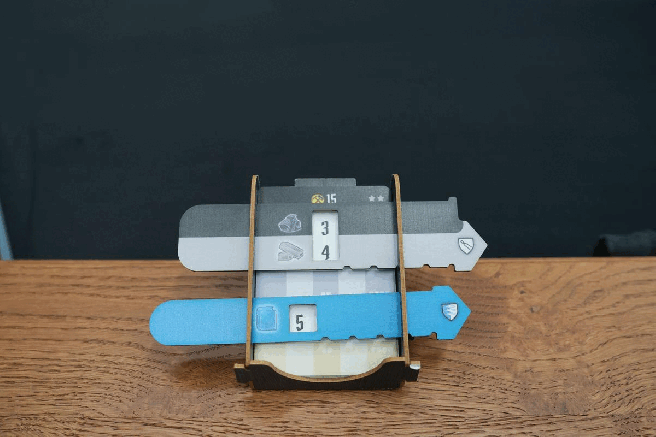
“We had to change our mindset to work with the cardboard computers, but it allows us to do so much more with the system compared to the wheel design,” says Petr.
Published on blog.czechgames.com,
on April, 19th 2023.
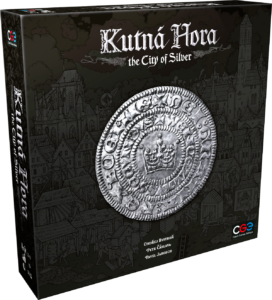 Kutná Hora: The City of Gold is a historical building Eurogame for 2-4 players from 13 years. A game lasts 60-120 minutes. It contains 1 Main board, 1 Supplementary board for the buildings offer, 4 Dual layer player boards, 2 Stands for the market decks, St. Barbara tiles, Guild tiles, Building tiles, Mine tiles, Councilor tokens, Cardboard coins, Action cards, Market cards, Setup cards, Set of tokens for each player (buildings, mines, plots, points, reputation, and production trackers), 1 Rulebook and Reference sheets for each player. You can pre-order it right now from us HeidelBÄRen in our online store!
Kutná Hora: The City of Gold is a historical building Eurogame for 2-4 players from 13 years. A game lasts 60-120 minutes. It contains 1 Main board, 1 Supplementary board for the buildings offer, 4 Dual layer player boards, 2 Stands for the market decks, St. Barbara tiles, Guild tiles, Building tiles, Mine tiles, Councilor tokens, Cardboard coins, Action cards, Market cards, Setup cards, Set of tokens for each player (buildings, mines, plots, points, reputation, and production trackers), 1 Rulebook and Reference sheets for each player. You can pre-order it right now from us HeidelBÄRen in our online store!
